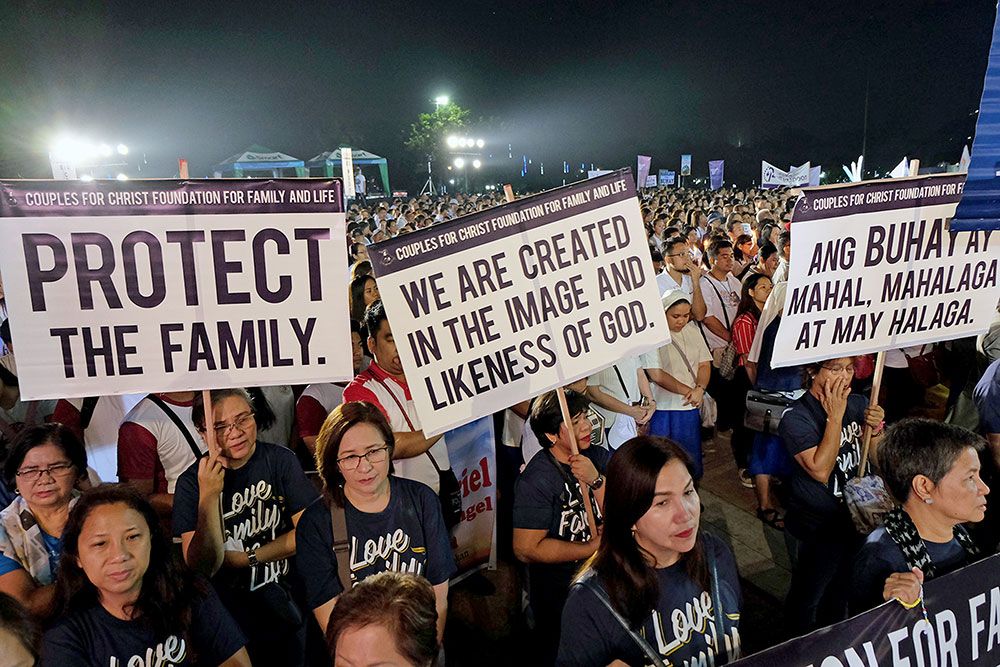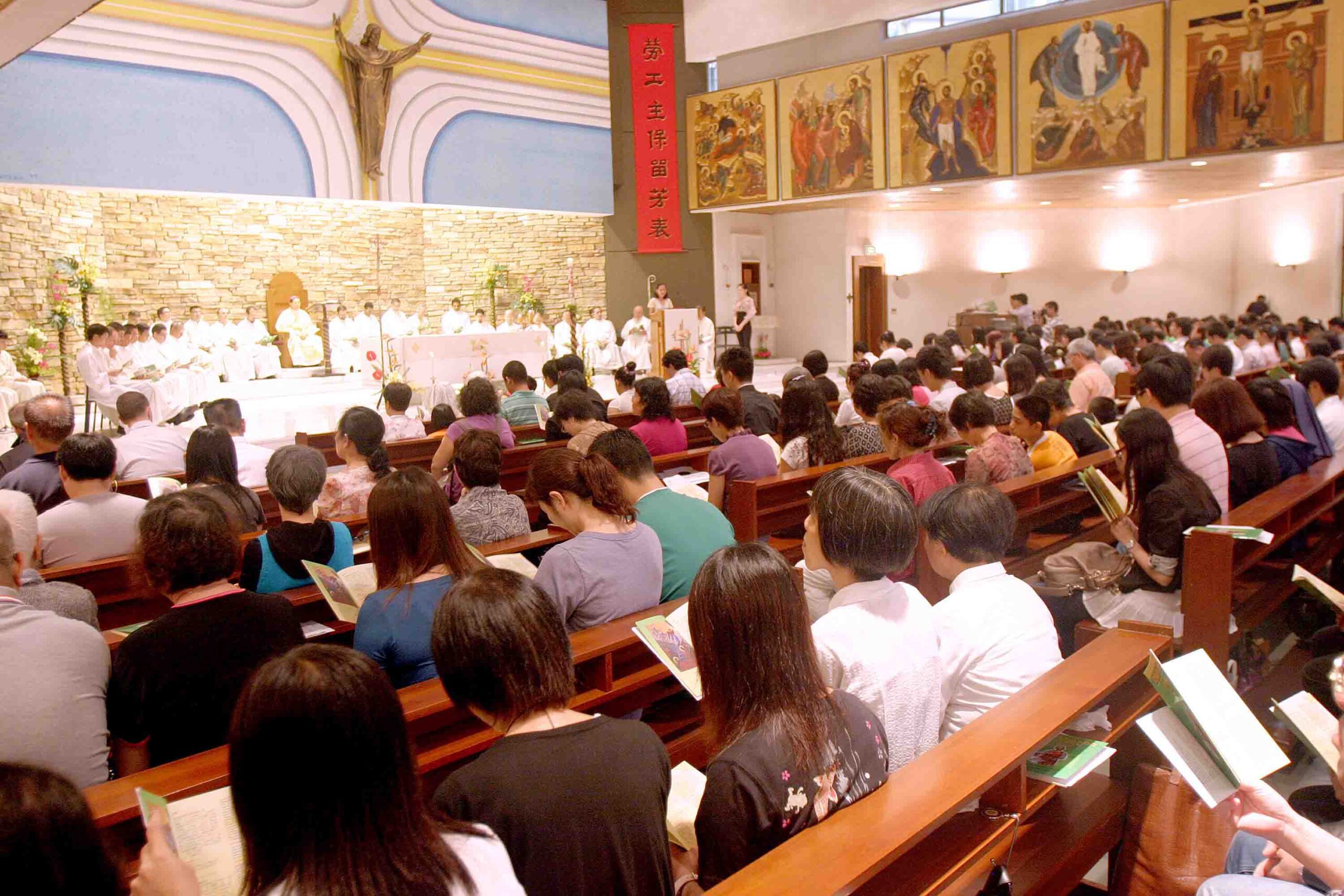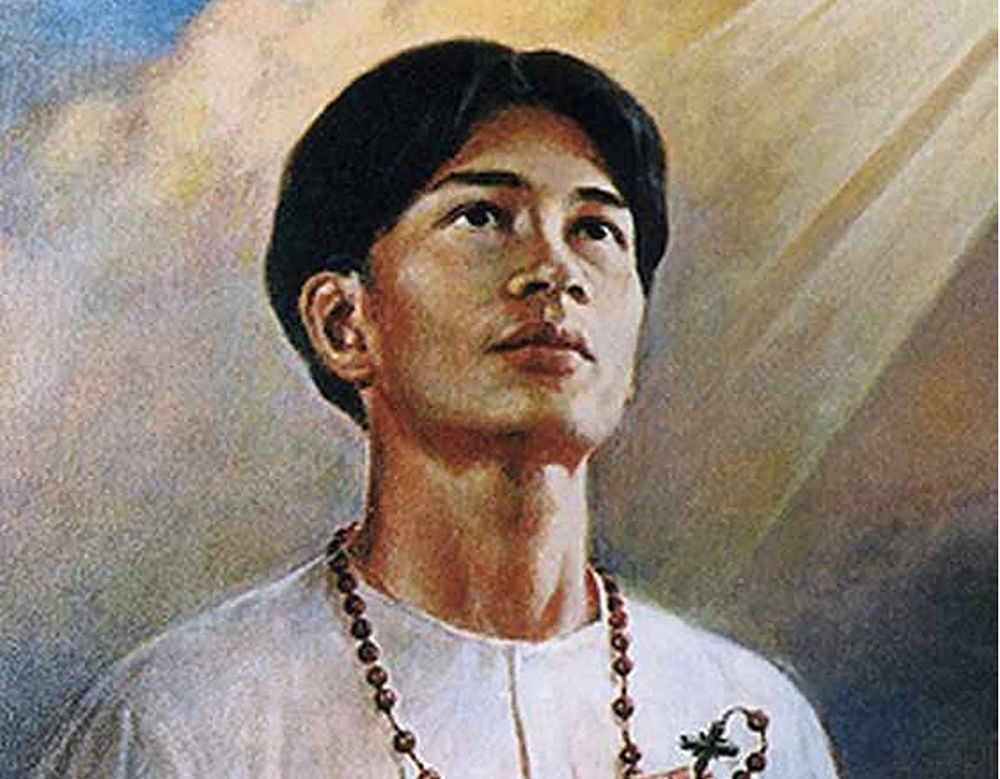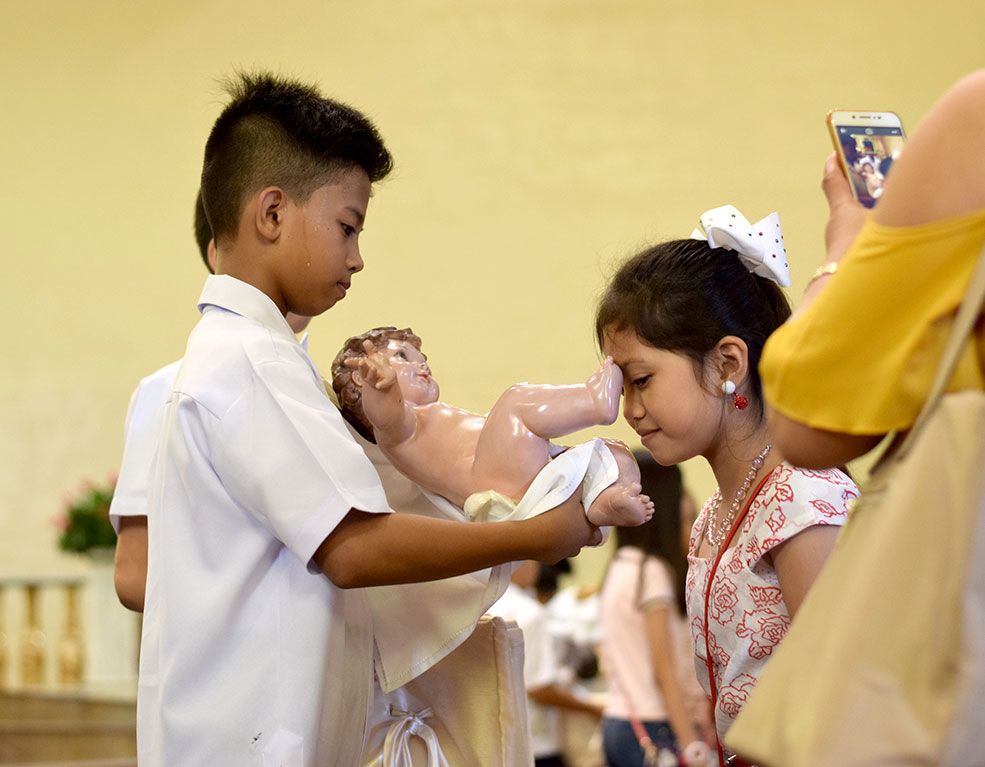For sure Christianity and Islam, already the theme of two articles published in World Mission, have many rich experiences of spiritualities which help us to understand better how God is working in these two religions. But the challenge that we pose here is to understand that also in other religions, and even outside the formal traditional religions like indigenous religions, there are forms of “spiritualities.” This helps us to explore more the spiritual dimension of life and the mystery of life, helping us to go beyond the limits of our understanding and discover more the aspirations of each person. It brings us to the richness of each person as a creature of God who needs to love and to be loved. It is a need like that of a breath of air to live. In fact, the root word of “spirituality” comes from the Latin verb spirare that means “to breathe,” while the correspondent adjective spiritualis means “of or belonging to breathing or to air.” We can see from the root word of spirituality that this word group is related to life, for it is only through breathing that a human being can stay alive. This is a manifestation of God and His love that is always alive.
There was a time in history when the term “spirituality” or “spiritual” was understood in a negative way. Today, there is great attention to spirituality because it is part of life and we can discover forms of spiritualities also among those who claim that they do not have any religion, but they have “spiritual aspirations” manifested in their search for meaning in life and in their commitment for the common good and their respect for “humanity” and “ethics” that help them to listen to the “voice of the conscience.” Thus, we can say that there are many “spiritualities” inside and outside religions.
What we have done in presenting the two previous modules of the mystical dimension of Islam and of Christianity is to explore more the “mystery of life” and have an experience of what we believe in can guide us beyond the structure of religions, including the holy books and the beliefs and rituals of our own faith. Our faith generates the dynamic energy of the “spirit” and the need to live what we believe in. Many are not able to experience the richness of “spirituality” because they are not pure in heart and believe that they are too busy to listen to God’s presence. Entering the spirit of “self-transcendence” must be part of our life and it is the aspiration that many follow.
In our “search for more,” Jesus advises us to become “simple as children,” telling us clearly: “Blessed are the pure in heart; they will see God” (Mt. 5:8). We find in all religions those who search for more and reach a high level of spirituality, starting from what they believe in. One example is the experience of Al-Gazali, a famous and respected Muslim scholar and Sufi of the past, who understood well the need of the spirit and he went beyond the teachings and rituals of his faith to experience more God’s love and the need to have a “taste of God.” For this reason, he started to give more attention to the deepening of this experience. He was a famous scholar but, in his search for more, he felt the need to have a “taste of God.”
We wish to give, in this article, some entry points to appreciate more spiritualities in the life of people from different parts of the world and to emphasize that spiritualities can unite people because they help us to be more “pure in heart” and to search for a “taste of God.” Spirituality does not isolate people from the reality of the world. Rather, those who explore more this path of life can contribute more for peace in society because they are those who can see others with sincere heart and are ready to explore the path of love in order to have a solid and sustainable peace in society.
We wish also to guide those who use this module to understand that “spiritualities” are becoming more global and visible in the world today, helping humanity to rediscover not only the spiritualities of different religions, but also the spiritual wisdom of the human race in its historical unfolding. The term “spirituality” is emerging also in areas where, traditionally, it has been ignored or banned. For example, it is emerging in the world of business and other fields of society, including ecology and dialogue with creation.
This “adventure” of life helps us to rediscover not only the presence of spiritualities in the world but also their contribution for harmony and peace. This challenges us to develop a great respect and appreciation for the spiritualities of “others,” at the same time, inspires us to deepen the “spiritualities” in our own religions. Considering that this module is addressed more to Christians and Muslims, we are invited to know more about the spiritualities of Christianity and Islam in the context of our traditions with the desire to understand the richness of other spiritualities in the world.
We hope that Christians and Muslims can be open to the signs of the times and that, in the process of understanding, our spiritualities will become the meeting place of peoples in the world, encouraging all to rediscover the love of God and the love of neighbor and work closer for peace as brothers and sisters.
This article is only an introduction to the theme of “spiritualities and peace.” Thus, we introduce here only a few entry points with the hope that we can develop some more of these points in our search for peace. We limit our attention to some entry points to the major challenges of today related to this specific aspect.
Signs of the times
The experience of the two brothers, Cain and Abel, presented in the Holy Bible and in the Holy Qur’an is still part of the world experience today. Wars and other forms of violence are present today in more dramatic forms of violence, conflicts, egoism and materialism. Without going far into the history of humanity, we can start recalling the horror of World War II and the holocaust or shoah. Why are we still in this stage of humanity? Basically, there is, in the human nature, the “energy” of love and hatred, good and bad. Different religions present this reality in different ways. The dramatic reality of negative energy of life present in our society today reminds us of the tower of Babel and the killing of Abel as these are recorded in the Holy Bible and the Holy Qur’an.
In this critical time of history, many are taking God out of history and their life, but God, like a boomerang, is re-entering in many ways. We are called today to rediscover spiritualities as the need of all and consider the new signs of spiritualities as signs of hope to build the future peace. The need for spirituality is entering in the world through events that cry for peace and justice. Those who live following the commandments of love and give their life for the common good give us hope and tell us that many spiritualities are alive in the world and many live their beliefs. We believe that it is God who moves events and people with His presence and love. God is present in history today in a very creative way and different religions and “movements” give their own answers to the mysteries of life like love, but also of suffering, death, the meaning of life, etc. We have to discover, appreciate, respect and understand the deeper meaning of the mystery of God in us and around us.
As demonstration of the new signs of the times for spiritualities, we introduce here some events and pioneers who help us to understand more the new inspirations and experiences of spiritualities. They are an inspiration for us who follow different religions, cultures and traditions.
The Universal Declaration of Human Rights
WW II ended in many parts of the world in 1945. The horror of the war, the dramatic experience of the atomic bomb, and the division among nations urged humanity to make a cry for peace and created the challenge to explore other forms of unity and collaboration. It was with this spirit that the United Nations was formed and one of the most important steps of the United Nations, since its beginning in 1948, was the Universal Declaration of Human Rights. This event can be considered a “milestone for humanity” and an expression of the “universal spirituality” that most of the nations have agreed to follow. We know that not all have accepted this Declaration in the same way, but it was a great event even if it still remains a dream in many places. But to “dream” in the spirit of this Declaration is already an expression of a spirituality of humanity. This dream gave more power to many, one of whom was Martin Luther King, a black Protestant pastor in the United States who was so passionate in his struggle to defend the rights of black people of America. He took inspiration also from Mahatma Gandhi and his spirituality. Luther King took the lead in this struggle. In April 1963, King led the march to Washington and, in front of 200,000 people, he delivered the famous speech “I Have a Dream.” This and many other positive stories of living and suffering, to stand on the side of human rights, are for sure expressions of the beliefs of many, inspired by their spiritualities.
Creation and spiritualities
Natural law reflects the presence of God. One of the famous scientists of modern times who helped us to see the mystical dimension of creation was Pierre Teilhard de Chardin, a French Jesuit who was initially misunderstood and suspected by many. He has given a great contribution to spirituality in the world in line with his understanding of science. In his teaching, we can discover his interest to present a process of spiritual transformation in the world. He has been called a “global prophet.” In his 1937 essay, “The Phenomenon of Spirituality,” he said that the highest form of this phenomenon is love that brings to the love of God in all expressions, including nature. The journey to a spirituality of creation has become one of the greatest challenges of our times. We are invited to explore more this new phenomenon as a new challenge for humanity that can unite people who live in the same house of “Mother Earth.”
“Encounter” of spiritualities
Alan Richard Griffiths, well-known under the name “Beda” (he received this name during his Benedictine novitiate in 1933), is one of the spiritual pioneers of the twentieth century. He was an English Benedictine monk who went to India to deepen his spiritual experience and he started an ashram called Shantivanan. He was a passionate Christian scholar who presented the importance of “encounter” of the spiritualities of the West and the East and thus promoted the importance of a better “encounter” among spiritualities in the search for God. Beda once wrote: “From the earliest time I can remember, I have always had the conviction that what I was experiencing was being given not for me alone but for others, in a sense, for humanity.” One of his famous reflections is: “I had begun to find that there was something lacking not only in the Western world but in the Western Church… I want to experience in my life the marriage of the two dimensions of human existence, the rational and intuitive, the conscious and unconscious, the masculine and feminine. I want to find the way to the marriage of the East and West.” The “encounter” (dialogue) of spiritualities is one of the greatest challenges today in the field of spirituality. Each one can give a contribution that helps to understand and explore more the deeper meaning of our own spirituality, ready to give space to new experiences. For this reason, Beda Griffiths, in India and in his ashram, gave more attention to contemplative prayer.
An analysis of Beda’s influence to the emerging interest in spiritualities today is in the interest to dialogue, in his attitude to meditation, the openness to new thinking and new ways to be part of the Church. Beda always tried to avoid syncretism in religions, but he was a great man of dialogue, careful of the dangers to regard all religions as essentially the same, differing only in accidental characteristic. This attitude was considered by Beda a way to destroy our forms of dialogue. He accepted the fact that, for Christians, the mystery is disclosed in Christ, for the Buddhist in the Buddha, for the Hindu in the Vedas and for the Muslims in the Qur’an. He said: “We are not seeking a syncretism in which each religion will lose its own individuality, but an organic growth in which each religion has to purify itself and discover its own inmost depth and significance and then relate itself to the inner depth of the other traditions. Perhaps it will never be achieved in the world, but it is one way which we can advance today towards unity in truth, which is the ultimate goal of mankind.”
Basic goodness
An emerging voice in the field of spirituality today is the voice of Dalai Lama, a spiritual and temporal leader to the people of Tibet. The encounter with the West has been, for him, a challenge to share his understanding of spirituality, at two levels. He says: “Actually, I believe there is an important distinction to be made between religion and spirituality. Religion for me, is concerned with faith in the claims of salvation of one faith tradition or another, an aspect of which is acceptance of some form of metaphysical or supernatural reality, including the idea of heaven and Nirvana. Connected with this are religious teachings or dogma, ritual, prayer, and so on. Spirituality,on the other hand, is concerned with those qualities of the human spirit – such as love and compassion, patience, tolerance, forgiveness, contentment, a sense of responsibility, a sense of harmony – which bring happiness both to self and others. While ritual and prayer, along with questions of nirvana and salvation, are directly connected to religious faith, these inner qualities need not be, however.” Thus, ethics in his view constitutes the core of spirituality. As a conclusion, his point is that one may free oneself from religious belief, but one can never be free from the imperatives of basic human qualities. Thus, the central part of the Dalai Lama’s spirituality is compassion. The Dalai Lama knows that his theory of spirituality can be accepted and, at the same time, be opposed by many. It is his opinion that this very fact can be an entry point for dialogue among religions. This understanding can be accepted or not, but it is getting the attention of millions because it is considered a “secular spiritualism.”
Love of God and Love of Neighbor
In recent years, there is emerging from the Muslims a contribution to dialogue through the open letter, “A Common Word Between Us and You,” sent by 138 Muslim scholars to then Pope Benedict XVI and other Christian leaders of the world. The letter is an invitation to move together for peace in the world, guided by the love of God and love of neighbor as Muslims and Christians inspired by the Holy Qur’an and the Holy Bible. This letter is an affirmation that the need to experience God’s presence and move for the common good is emerging, in spite of the many signs of violence that remind us of the other face of the mystery of humanity shared in the Holy Bible and the Holy Qur’an in the story of the two brothers, Cain and Abel.
This open letter was officially presented on October 13, 2007 and it is gaining ground in the world, especially in the field of spiritualities because it guides Muslims and Christians to rediscover the foundation of spirituality that is love and which is beyond the divisions of the two different beliefs and traditions, including the rituals and laws linked to specific aspects of the Islamic and Christian faiths. (We encourage those who are interested to deepen their understanding of this module by reading the “Common Word” open letter, and discover the love of God and the love of neighbor in Islam and Christianity, as an entry point for many other applications of love in life.)
This open letter starts with a passionate invitation that is the fruit of a spiritual approach to dialogue. It says: “Muslims and Christians together make up well over half of the world’s population. Without peace and justice between these two religious communities, there can be no meaningful peace in the world. The future of the world depends on peace between Muslims and Christians. The basic of this peace and understanding already exists. It is part of the very foundational principle of both faiths: love of one God, and love of neighbor. These principles are found over and over again in the sacred text of Islam and Christianity…”
For sure, this open letter is a new way to promote a sincere dialogue between Muslims and Christians because it starts from a spiritual approach and the basic foundation of all spiritualities inspired by love.
Dialogue and spiritualities
Many consider this time in history as the “Time of Dialogue.” There was a time among Christians when dialogue was not understood properly, even in times of intolerance, wars and other forms of violence, because the basic understanding was that there is one truth and one salvation for all – thus, all others have to enter in this dimension of faith. In more recent times, without putting aside the understanding of the Christian faith about truth and salvation, the focus was put on the dignity of each human being created by God with the same dignity and aspirations that spiritualities perceive and develop as experience of life. A similar attitude we find in the Islamic teaching which proposes Islam as the last revelation, giving to some, in the past and recent history, the authority to move in a way that is not dialogical. But, in more recent times, even Islam is emphasizing Qur’anic verses that open the door to dialogue. In this context, Christianity and Islam are not called to change their beliefs but their attitude in respecting the dignity of each person as created by the same God. Thus, spiritualities are experiences of our own faith and, at the same time, bring people beyond the “dogma” of our faith. In this case, faith is the entry point of spiritualities and the foundation where each one discovers the inner aspiration of the human heart. Spirituality can be considered an application and experience of our faith and ritual practices thus bringing us beyond the “dogma” of our own religion. Around this concept, there are many theories, but what is essential for us is to respect all theories, especially to understand the core aspect of faith that is love for all and not give in to the temptation to adopt a syncretic attitude that destroys the essence of our own respective religions. At the same time, the mission of dialogue, based on a spiritual dimension, is a powerful energy to go against those who plan to use our own religion for their vested interest and ambitions. Thus, spiritualities are the channel to guide us to harmony, solidarity and peace. This is the great challenge of dialogue today.
The term dialogue is relatively new in common parlance. In the language of the Church, it started to be used during the Vatican II Council, especially in relation to interreligious dialogue. This new era of dialogue among religions has been prepared by many events and “prophets of dialogue.” We do not present here the richness of the new signs of the times related to interreligious dialogue. We try to give here only some entry points about “dialogue and spiritualities” as it is presented by the Silsilah Dialogue Movement.
The three articles were originally published in the Silsilah Bulletin. The first two were reprinted in the World Mission of March and of December 2011. This one is just an excerpt.
– The essay is found in P. Teilhard de Chardin (1969), Human Energy(London: Collins)
– Letter from Beda Griffths to Judson Trapnell, 31 May 1988, quoted in J. Trapnell (1993), Beda Griffiths’ Theory of Religious Symbol and Practice of Dialogue: Toward Interreligious Understanding (unpublished doctoral thesis, Michigan: the Catholic University of America).
– Beda Griffths, “The One Mystery,” The Tablet (9 March 1974), p. 223.
– The Dalai Lama, Ethic for the New Millennium, p. 22.
















